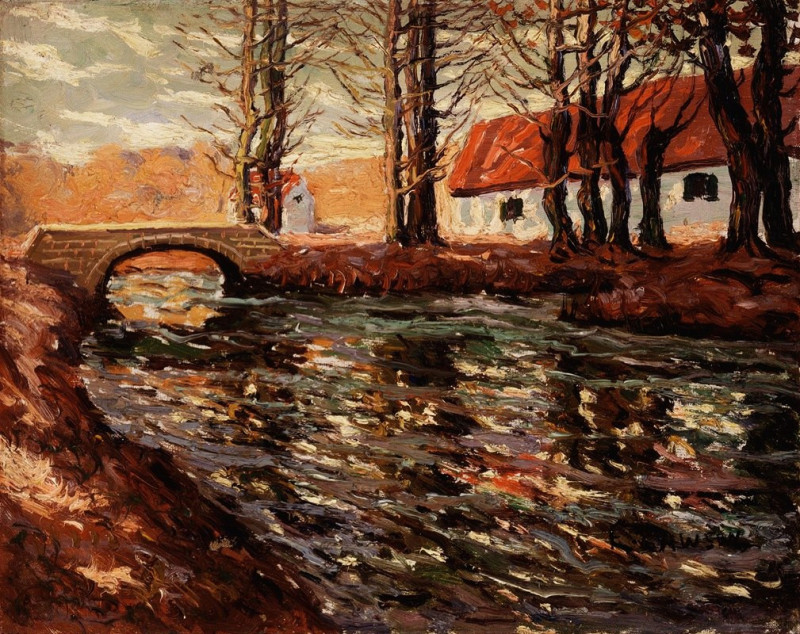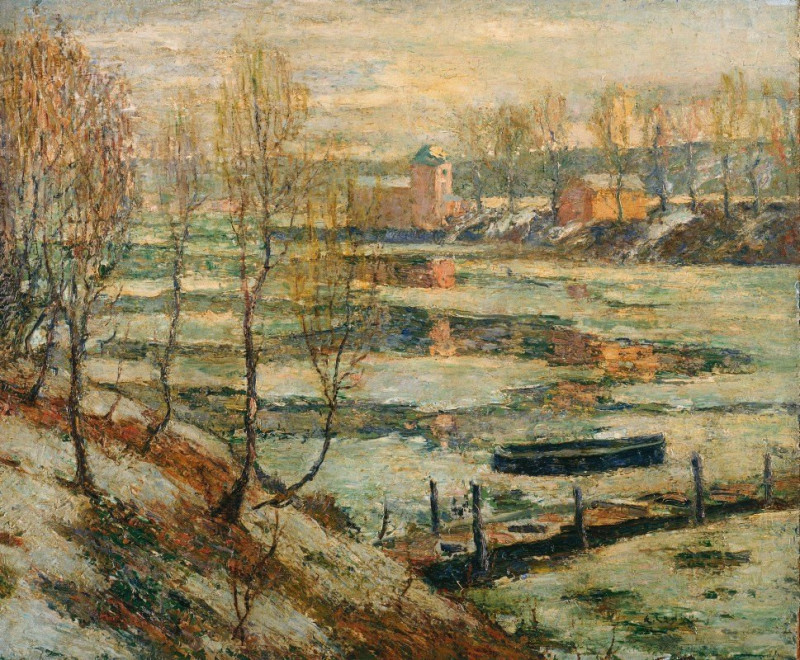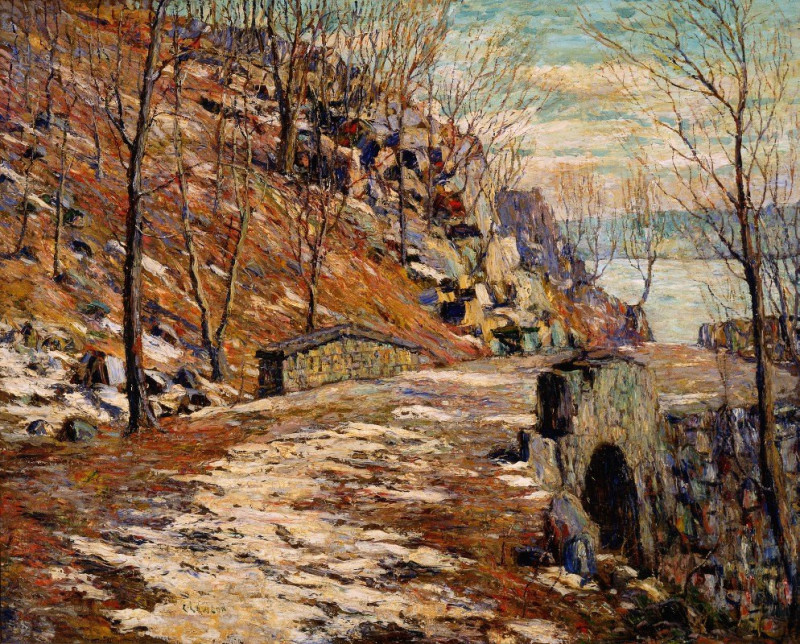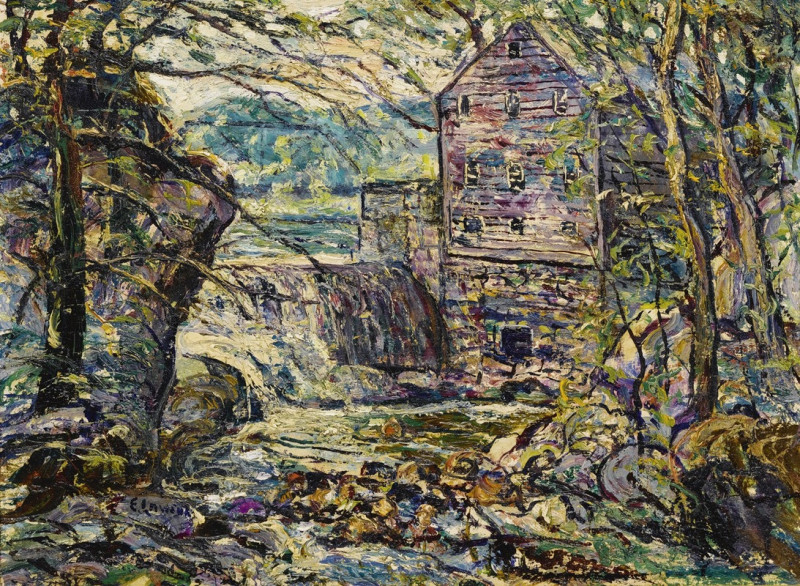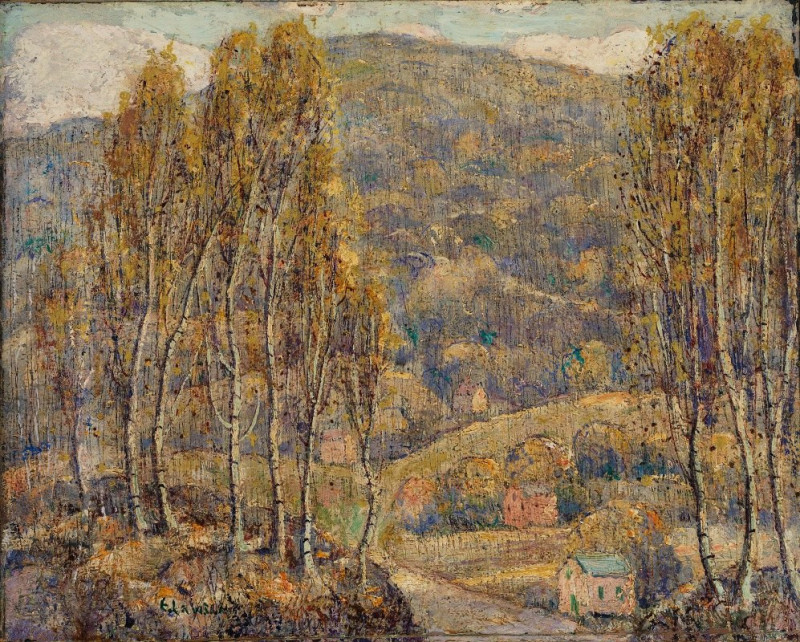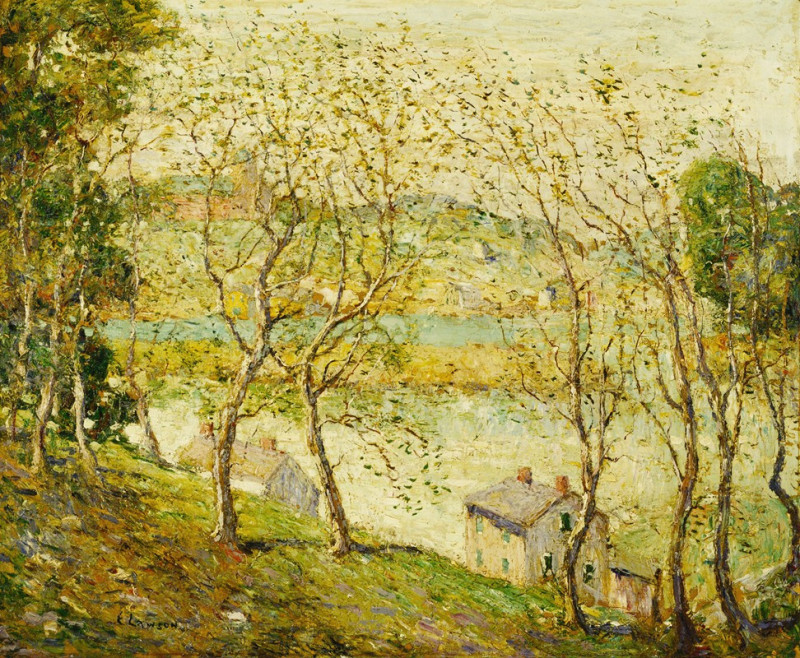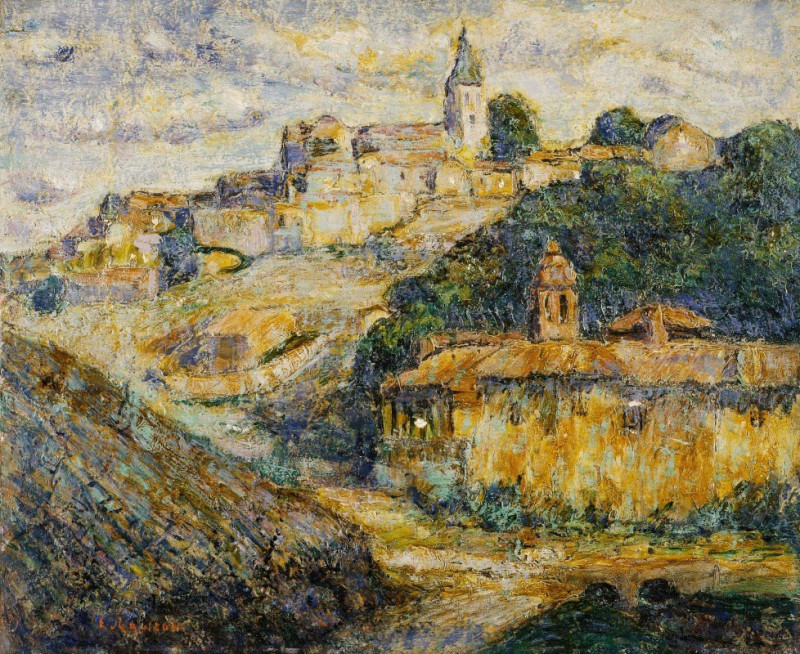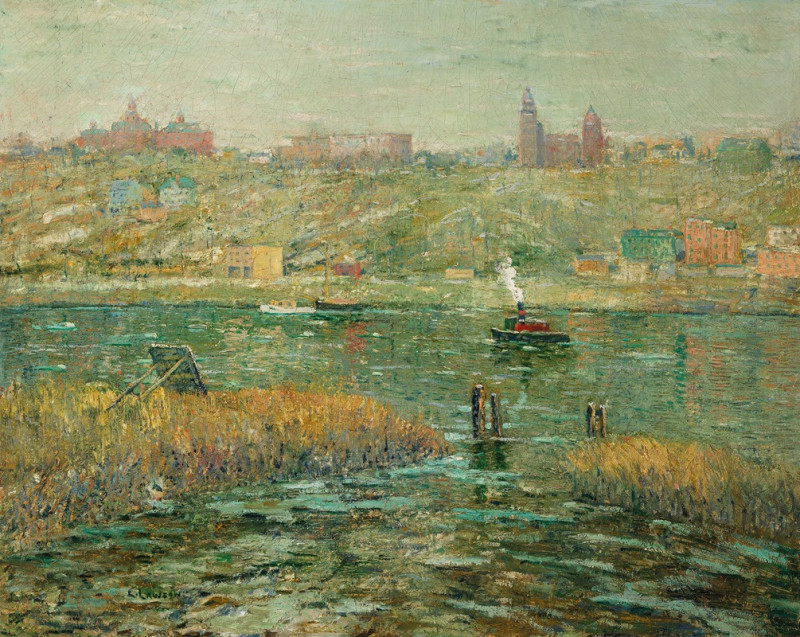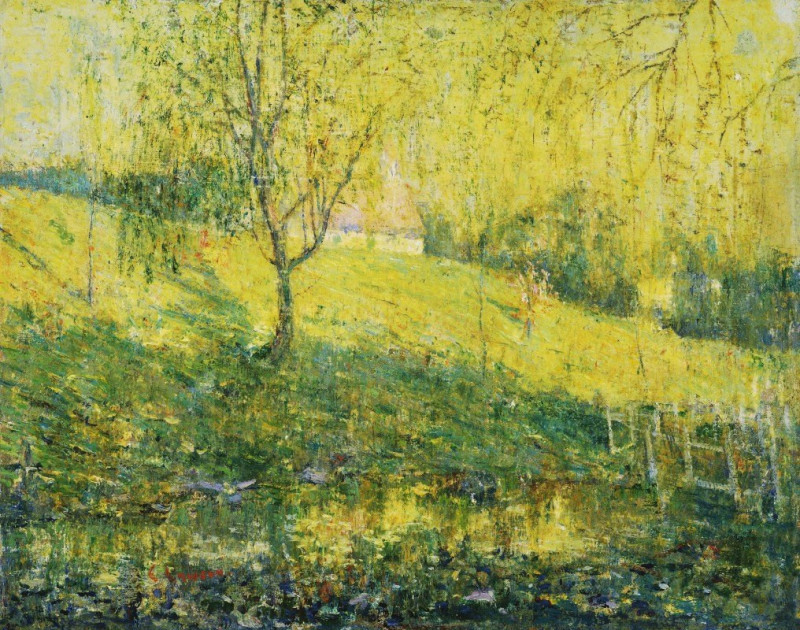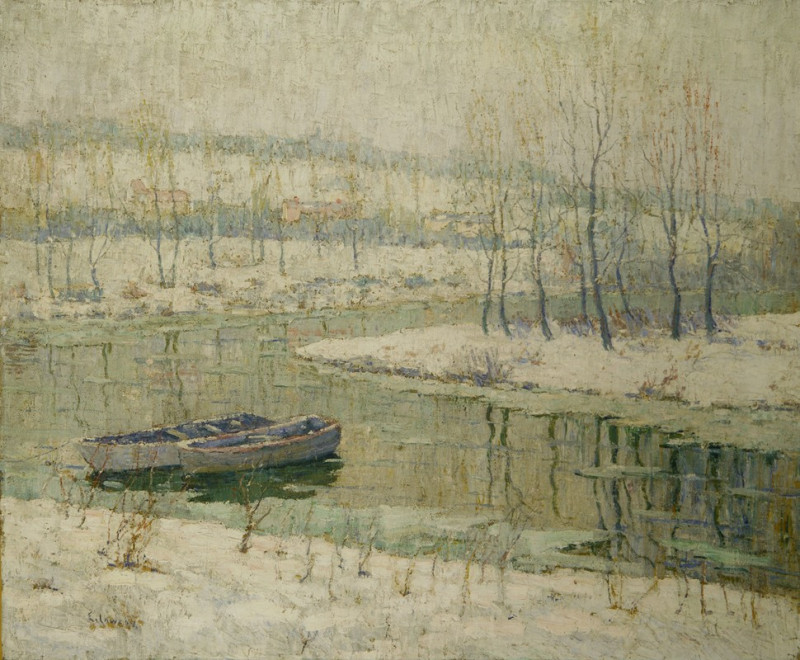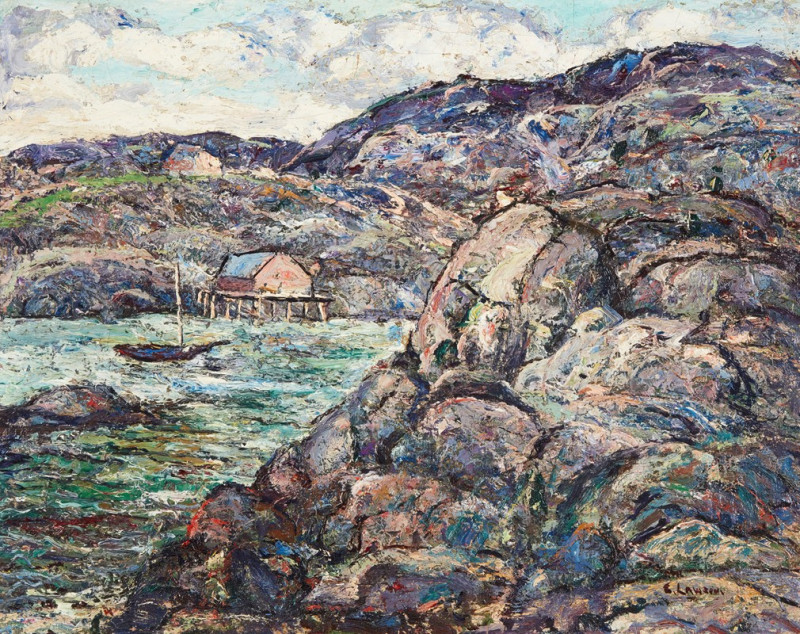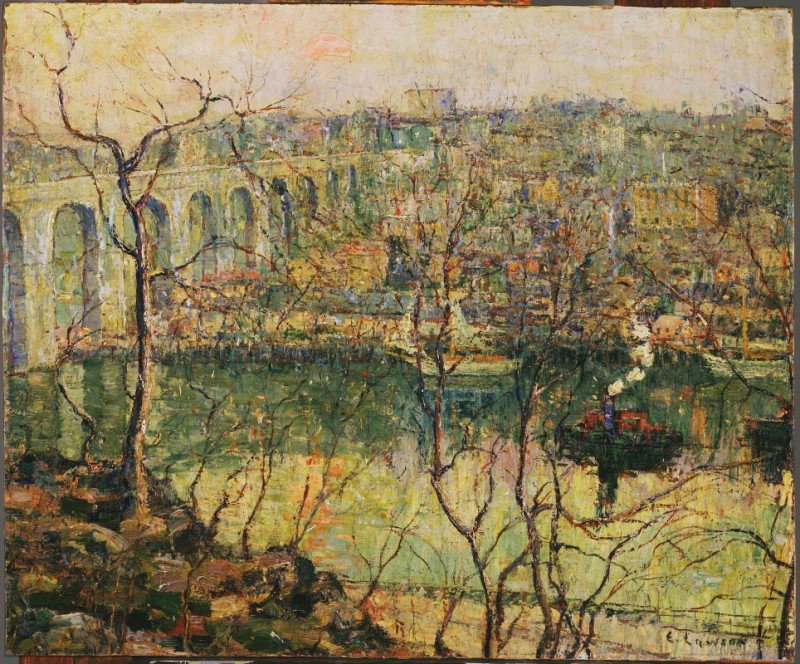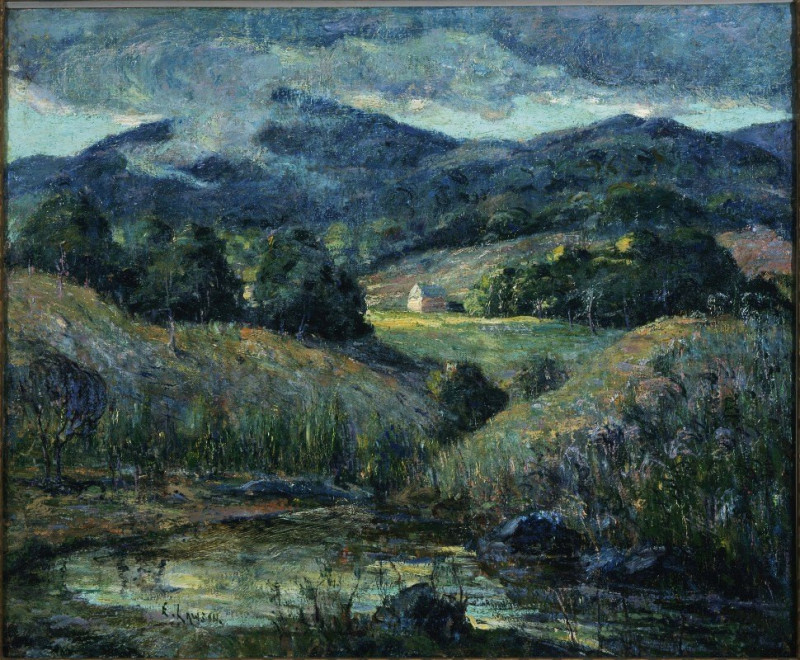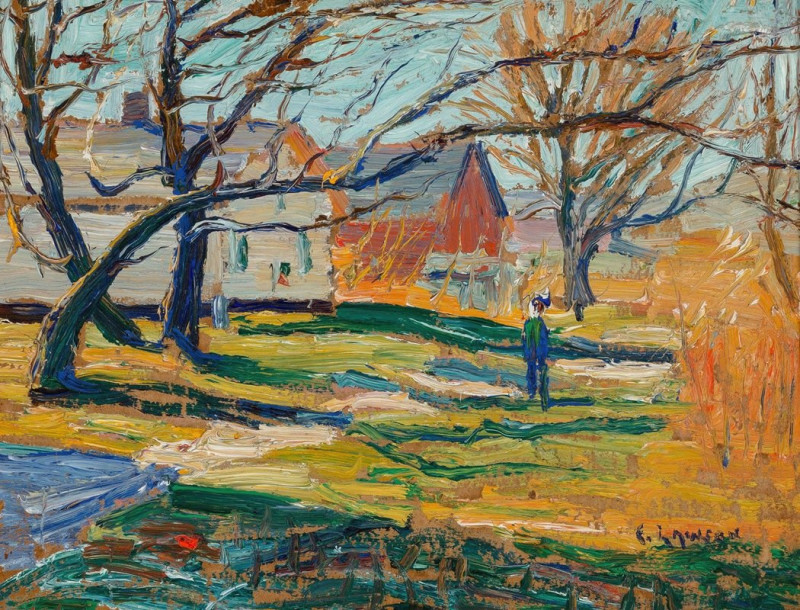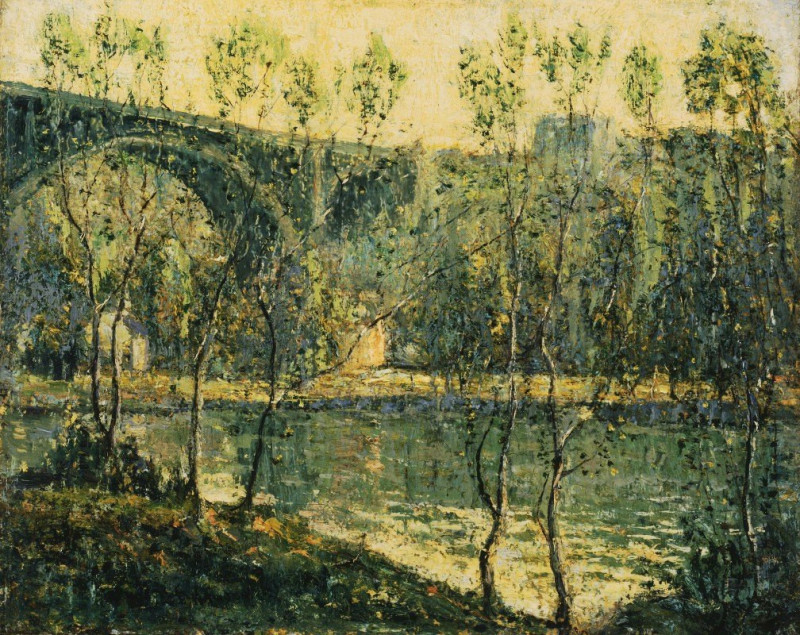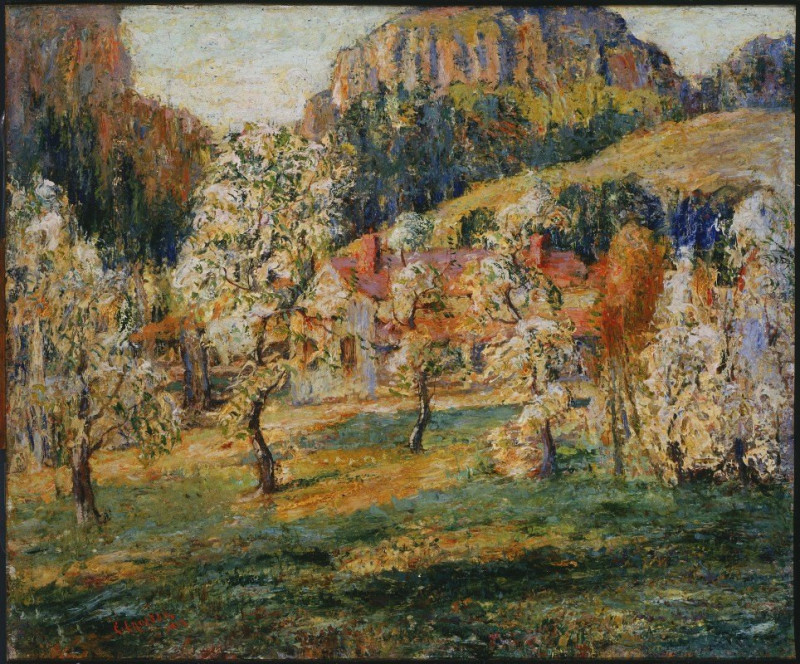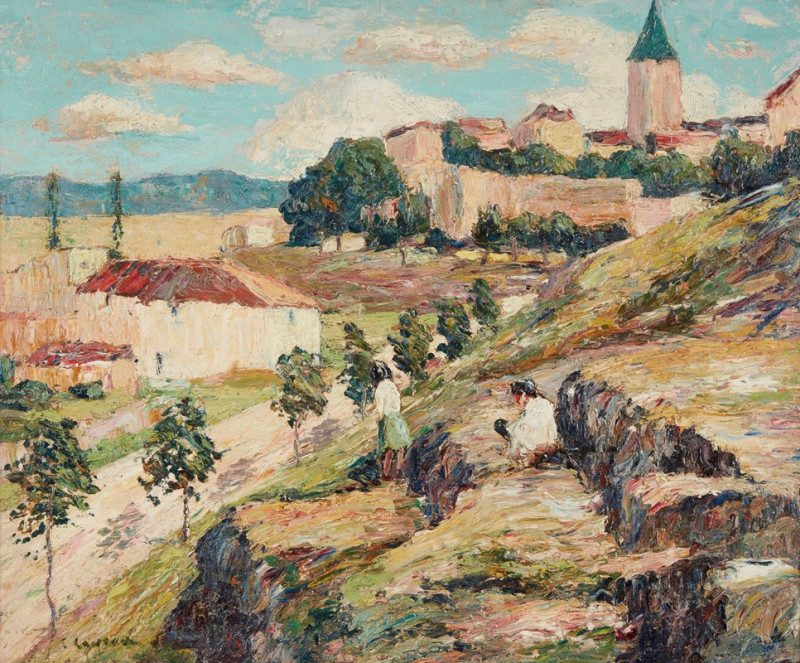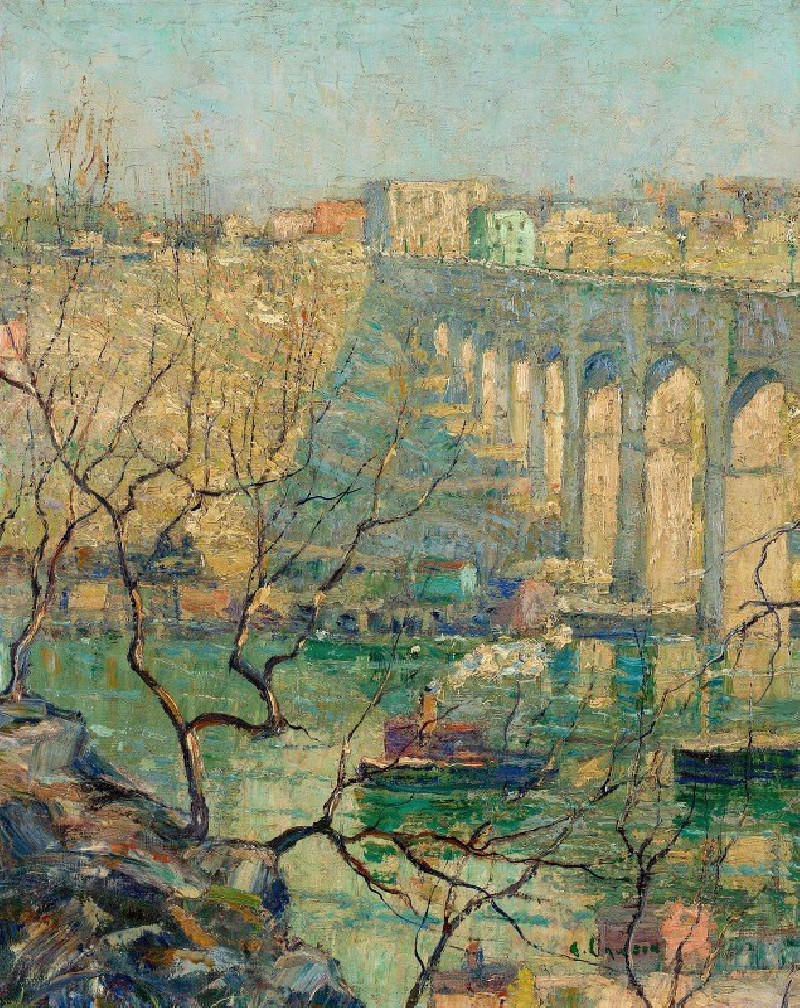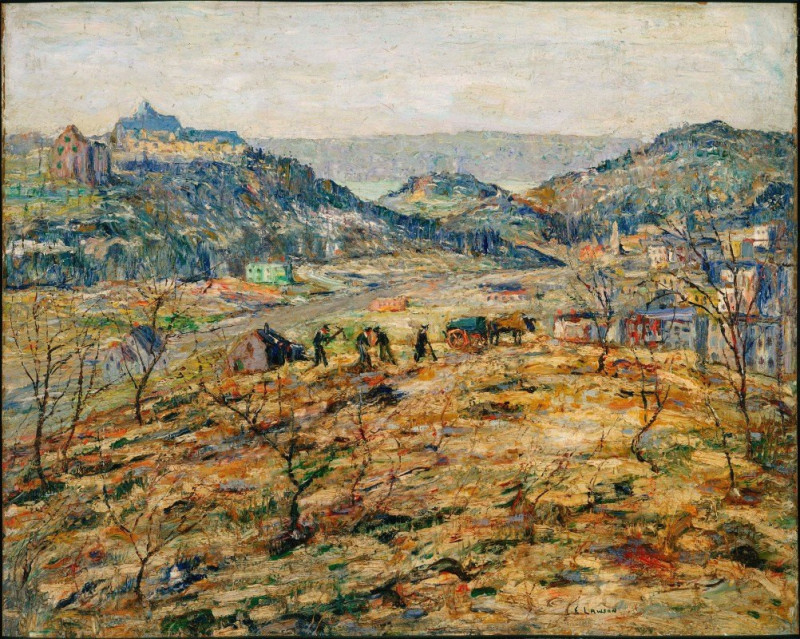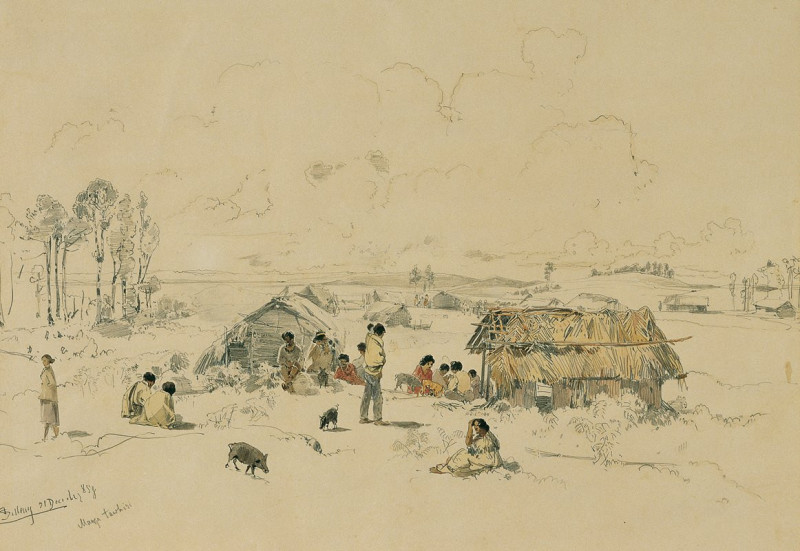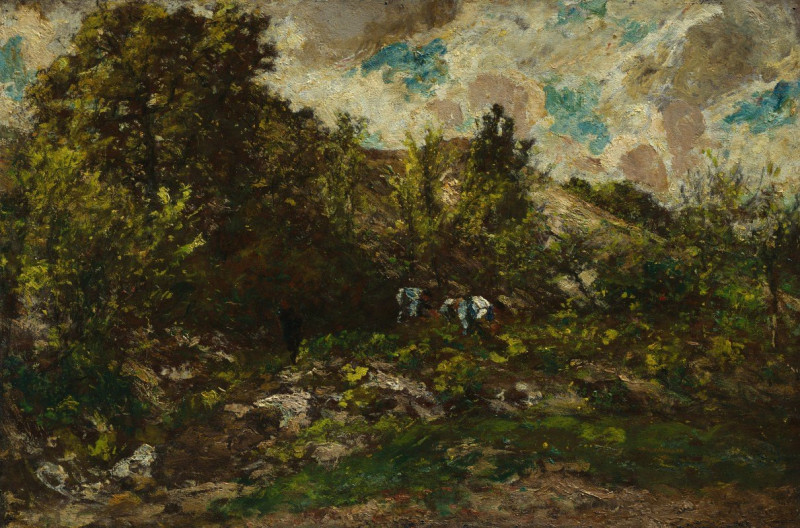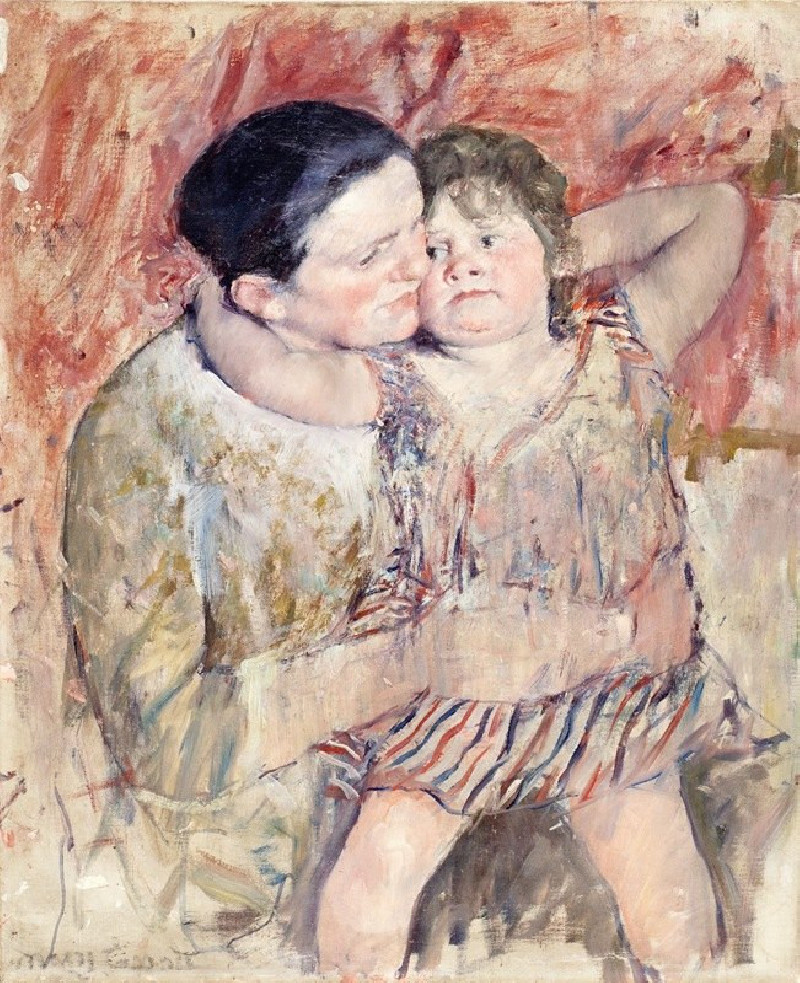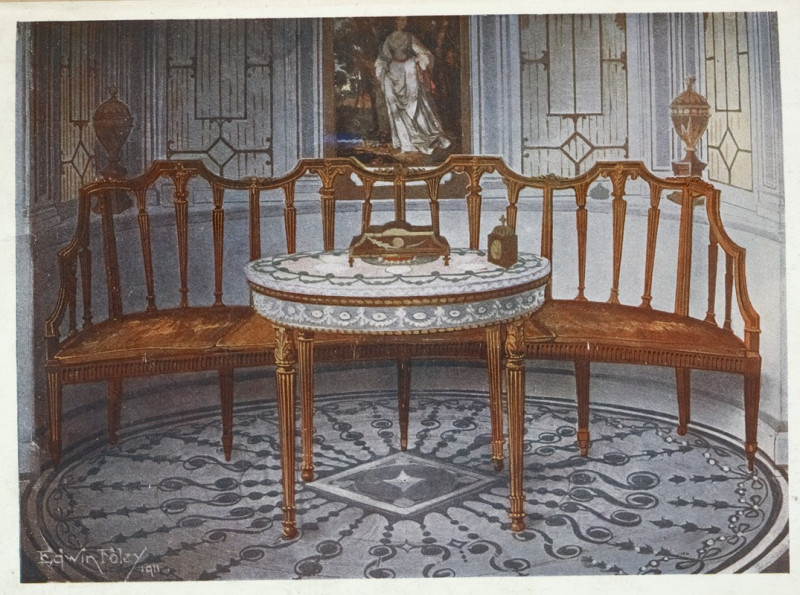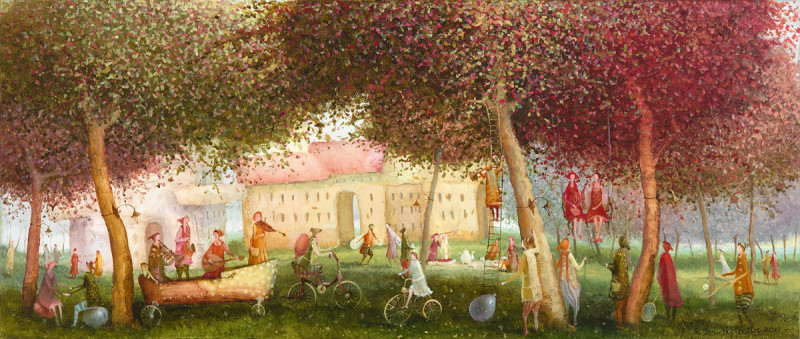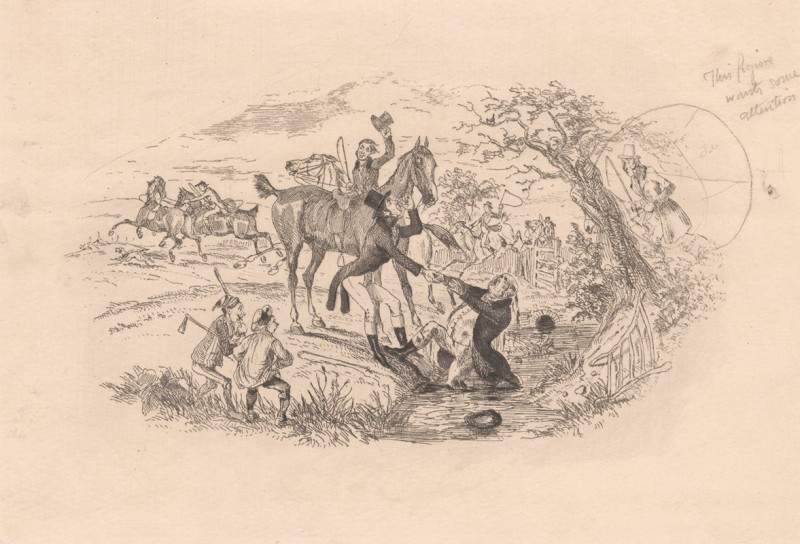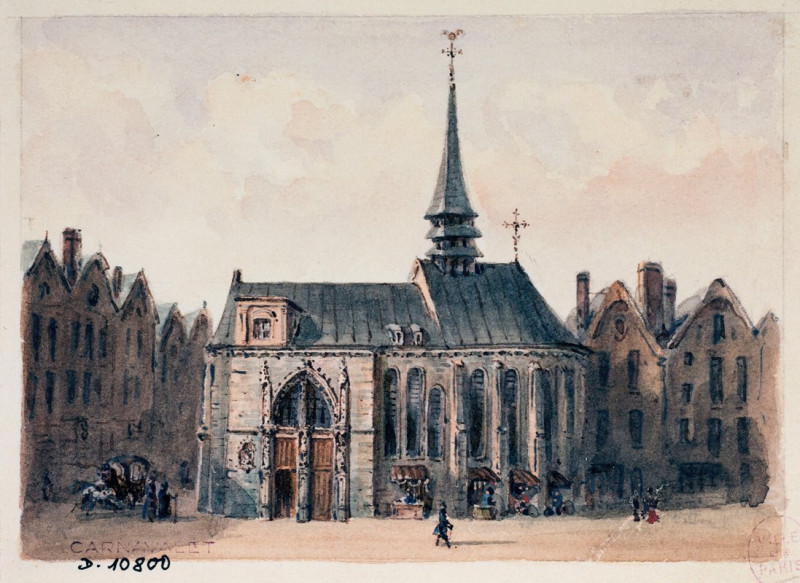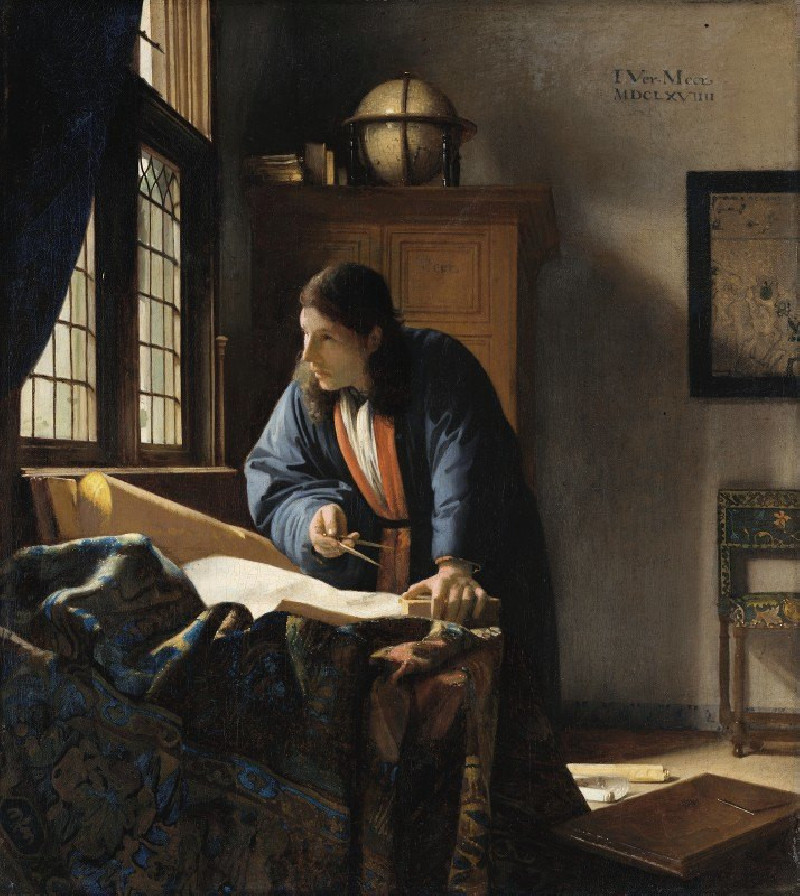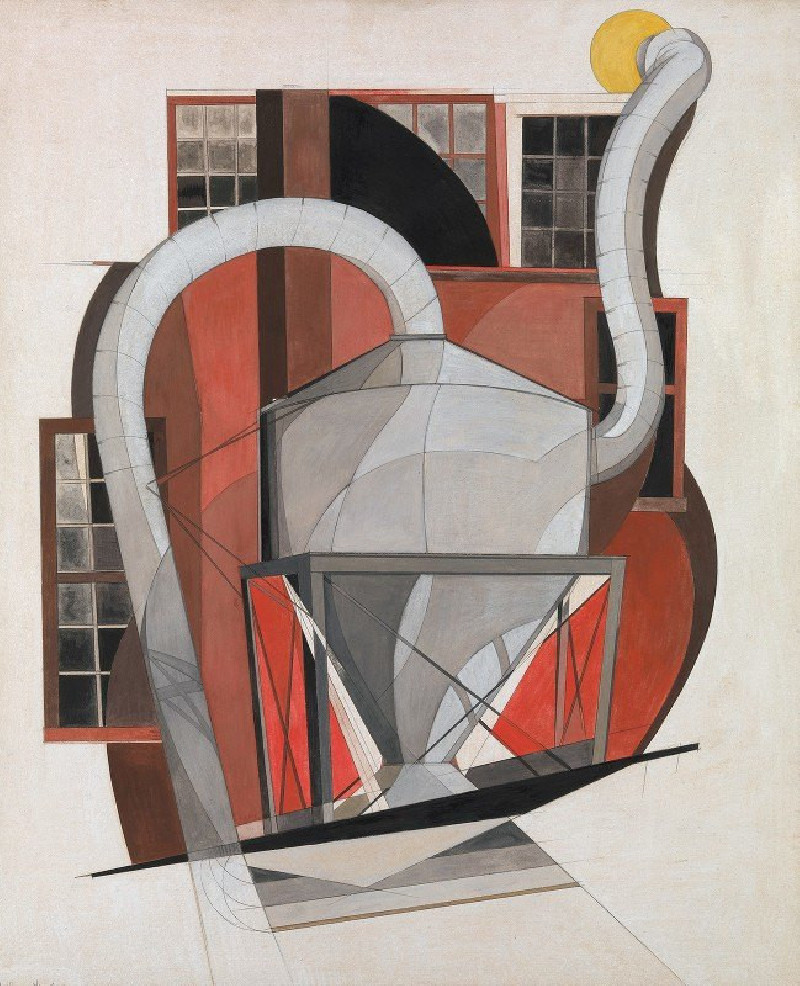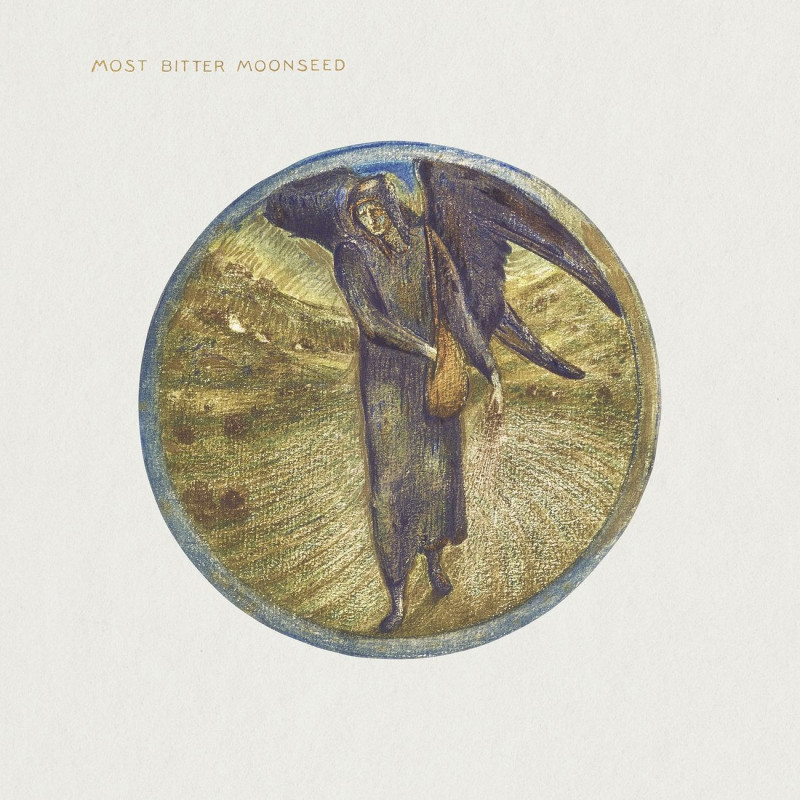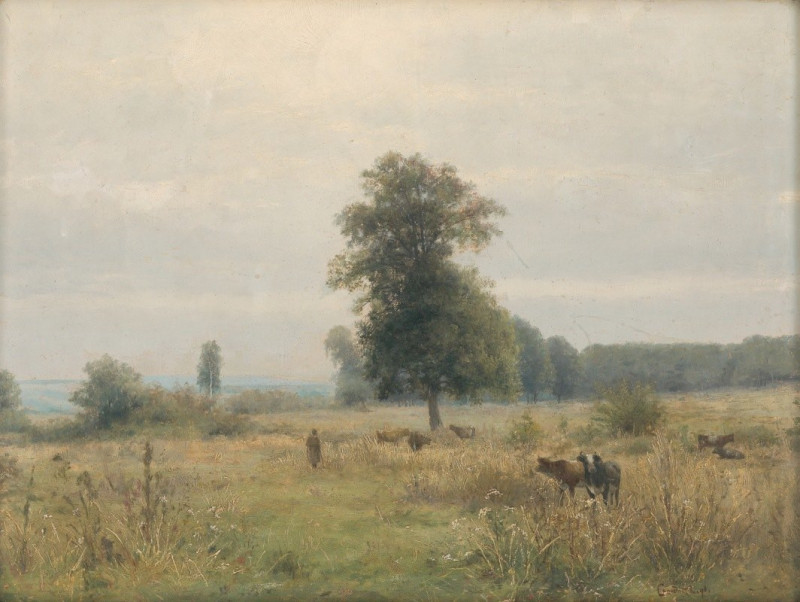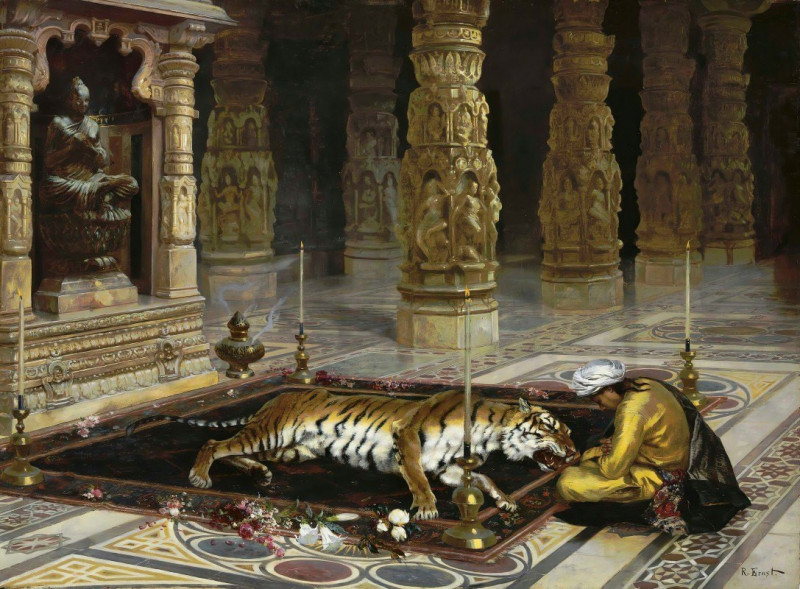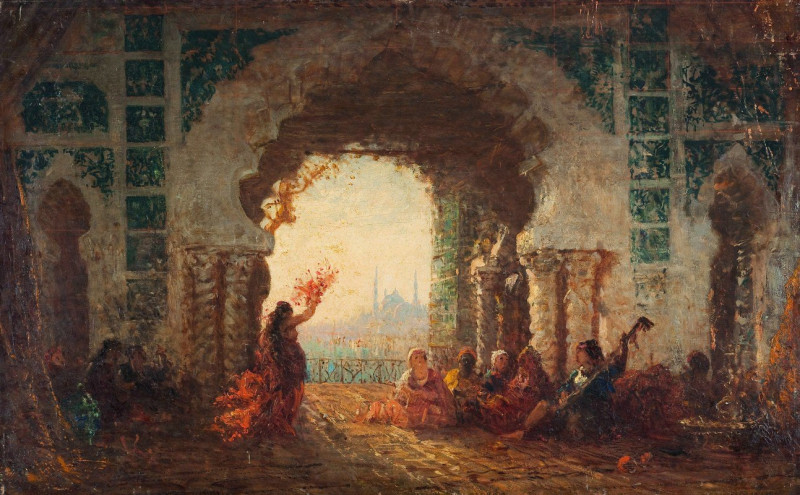Harlem River Winter Scene (ca. 1910)
Technique: Giclée quality print
Recommended by our customers
More about this artwork
Ernest Lawson's Harlem River Winter Scene provides a serene and intimate glimpse into the early 20th-century urban winter landscape with a distinctive impressionistic touch that marks the essence of his style. This painting encapsulates a chilly, tranquil day along the Harlem River in New York City, capturing a moment frozen both in time and by the winter’s embrace.The composition of this artwork is rich with textured strokes and a muted color palette that combines cool tones of blues and greens with warmer hints of reds and browns, evoking a sense of gentle but crisp winter air. In the foreground, snow blankets the slope leading down to the river, its surface interrupted periodically by the rustic browns and ambers of winter-bare trees. One can almost hear the crunch of snow underfoot and feel the briskness of the air as it might have been on that winter day.Large patches of snow-laden ground contrast with the dark, reflective waters of the river, which calmly mirrors the skeletal trees and hints of structures along its banks. A humble house and boat docks partially obscured by bare trees stir a sense of quietude, a world away from the hustle and bustle expected in the New York City we know.Ernest Lawson, often affiliated with the Ashcan School, presents a quieter, more pensive aspect of city life, far removed from the gritty realities often depicted in the works of his contemporaries. With Harlem River Winter Scene, Lawson invites viewers to a moment of introspection and appreciation of the still beauty that winter can offer, even in the least likely of places.
Delivery
Returns
Ernest Lawson (March 22, 1873 – December 18, 1939) was a Canadian-American painter and exhibited his work at the Canadian Art Club and as a member of the American group The Eight, artists who formed a loose association in 1908 to protest the narrowness of taste and restrictive exhibition policies of the conservative, powerful National Academy of Design. Though Lawson was primarily a landscape painter, he also painted a small number of realistic urban scenes. His painting style is heavily influenced by the art of John Henry Twachtman, J. Alden Weir, and Alfred Sisley. Though considered a Canadian-American Impressionist, Lawson falls stylistically between Impressionism and realism.



